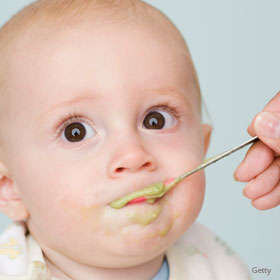three "a-ha" studies that shaped how I thought about food and feeding
 Here are a few of my favorite studies. I have included citations, links, and italics are excerpts from my book Love Me, Feed Me, 'cus I'm lazy (busy), and heck, it's already edited and proofed :) What are your favorite studies? Do these make you think at all differently?1) Pass the Ketchup PleasePliner P, Stallberg-White C. “Pass the Ketchup, Please:” Familiar Flavors Increase Children’s Willingness to Taste Novel Foods. Appetite. 2000;34:95-103."Condiments can be your friend. Parents often express a reluctance to serve sauces and dips, worrying the child won’t learn to eat foods plain. Think of ketchup and dips like “training wheels.” You probably won’t have a teenager pouring ketchup on rice or corn on the cob— that is, unless you are fostering or adopting a teenager who comes to you doing that. The bottom line is that condiments help children learn to like new foods."take home message: Don't be afraid of condiments. They help rather than hinder the process of learning to like new foods. 2) Green Bean StudyForestall CA, Mennella JA. Early Determinants of Fruit and Vegetable Accep- tance. Pediatrics. 2007;120:1247-54. "Even defining food “rejection” is problematic. Most parents give up on offering a food after only a handful of tries, and studies show that parents aren’t always able to distinguish the process of learning to like new foods from rejection. In one study introducing green beans, babies squinted and frowned with the new food, but with repeated no-pressure exposures, most were eating the green beans after about a week. Interestingly, though the infants were eating the beans, the authors wrote, “Mothers were apparently unaware of these changes in acceptance.” Clearly, quantifying rejection is tricky, and the quality of the feeding relation-ship plays a role in the apparent traits of the child."take home message: Parents aren't very good at being able to tell if an infant "likes" a new food. Keep offering the foods you want them to learn to like to eat—over and over. 3) Mind over MilkshakesCrum AJ, Corbin WR, Brownell KD, Salovey P. “Mind Over Milkshakes:” Mindsets, Not Just Nutrients, Determine Ghrelin Response. Health Psychology. 201;30:424-9
Here are a few of my favorite studies. I have included citations, links, and italics are excerpts from my book Love Me, Feed Me, 'cus I'm lazy (busy), and heck, it's already edited and proofed :) What are your favorite studies? Do these make you think at all differently?1) Pass the Ketchup PleasePliner P, Stallberg-White C. “Pass the Ketchup, Please:” Familiar Flavors Increase Children’s Willingness to Taste Novel Foods. Appetite. 2000;34:95-103."Condiments can be your friend. Parents often express a reluctance to serve sauces and dips, worrying the child won’t learn to eat foods plain. Think of ketchup and dips like “training wheels.” You probably won’t have a teenager pouring ketchup on rice or corn on the cob— that is, unless you are fostering or adopting a teenager who comes to you doing that. The bottom line is that condiments help children learn to like new foods."take home message: Don't be afraid of condiments. They help rather than hinder the process of learning to like new foods. 2) Green Bean StudyForestall CA, Mennella JA. Early Determinants of Fruit and Vegetable Accep- tance. Pediatrics. 2007;120:1247-54. "Even defining food “rejection” is problematic. Most parents give up on offering a food after only a handful of tries, and studies show that parents aren’t always able to distinguish the process of learning to like new foods from rejection. In one study introducing green beans, babies squinted and frowned with the new food, but with repeated no-pressure exposures, most were eating the green beans after about a week. Interestingly, though the infants were eating the beans, the authors wrote, “Mothers were apparently unaware of these changes in acceptance.” Clearly, quantifying rejection is tricky, and the quality of the feeding relation-ship plays a role in the apparent traits of the child."take home message: Parents aren't very good at being able to tell if an infant "likes" a new food. Keep offering the foods you want them to learn to like to eat—over and over. 3) Mind over MilkshakesCrum AJ, Corbin WR, Brownell KD, Salovey P. “Mind Over Milkshakes:” Mindsets, Not Just Nutrients, Determine Ghrelin Response. Health Psychology. 201;30:424-9
take home message: How we feel about food effects how our body uses food and drives our hunger. Eat food that tastes good. Think of all tasty foods as indulgent and creamy. Don't eat a food just because you think you "should." BONUS!!4) No such thing as too sweet for kids...Coldwell SE, Oswald TK, Reed DR. Biological Drive For Sugar as Marker of Growth Differs Between Adolescents with High Versus Low Sugar Preference. Clinical Nutrition. 2010;29:288–303. (not original citation, but related link)
take away message: Children will outgrow their super-sweet tooth. They will do so more readily if we don't mess with that natural process.
